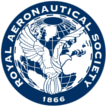The Future Rotorcraft: Enabling capability through the application of technology
The performance and utility of the ubiquitous edge wise rotary wing configured aircraft has reached a natural limit. The enormous strides taken by the fixed wing community in the development of increasingly efficient, mission focussed, cost effective, green and quick to market solutions have not been matched by the rotary wing community. The barrier to matching the fixed wing community is not concepts or vision: it is the infrastructure of technology and manufacturing techniques that have contrived to hold our community back. Learning lessons from the fixed wing community and adapting them to suit the needs of the rotary wing vehicle is our challenge and the time is now right to take on this challenge and succeed.
The rotary wing vehicle has always provided a niche capability, serving its operators well in situations where no other vehicle could achieve the desired result. It has provided search and rescue as well as emergency medical services that have saved countless lives, it has delivered military effect with great impact, it has supported the development and realisation of off shore energy delivery and it has connected city centres for convenient transportation.
Yet, despite these achievements the effectiveness of the rotary wing configuration has stagnated as one or two tried and tested configurations using the edge-wise rotor have dominated this mode of transport.
The V22 Osprey and BA609 have shown that other configurations are viable and offer significant performance benefits, but so far the tilt rotor has not shown that it can achieve a paradigm shift in respect of time to market and cost of ownership. Recently, others have returned to concepts that may have been tried before but until now were only viable as one off prototypes or design studies that never left the drawing boards.
Enabling technologies related to materials, construction and design tools have matured in the fixed wing community and are beginning to find application to rotary wing solutions. The inevitable and appropriate pressures of environment safety must also be recognised, accepted and converted from complex problem to cost effective solution.
Sponsored by:
Co Sponsors:
A more detailed programme will be available shortly or contact the Conference & Events Department for more information on +44 (0)20 7670 4345 / [email protected]
-
Event venue: Royal Aeronautical Society Headquarters
Address: No.4 Hamilton Place, London, United Kingdom, W1J 7BQ - View Map Below -
Royal Aeronautical Society
-
Do more
-
FIND: out more about this and other Royal Aeronautical Society events
-
BROWSE: the full events calendar
-
REVIEW: a list of upcoming events
-
PURCHASE: proceedings from past Royal Aeronautical Society conferences
-
DOWNLOAD: or listen to the latest recordings of prestigious Royal Aeronautical Society lectures online for free
-
REGISTER: to attend this event
-
DOWNLOAD: an event programme
-
DOWNLOAD: sponsorship and exhibitor package information




